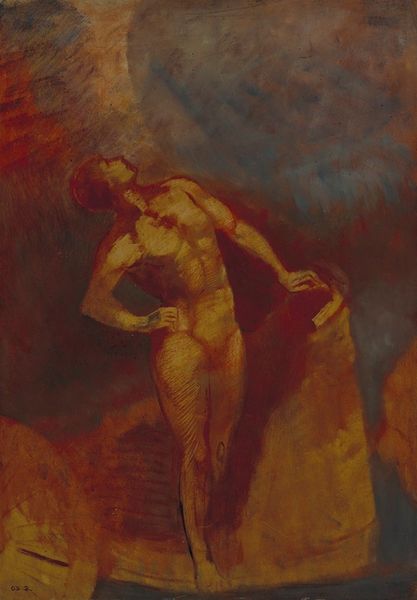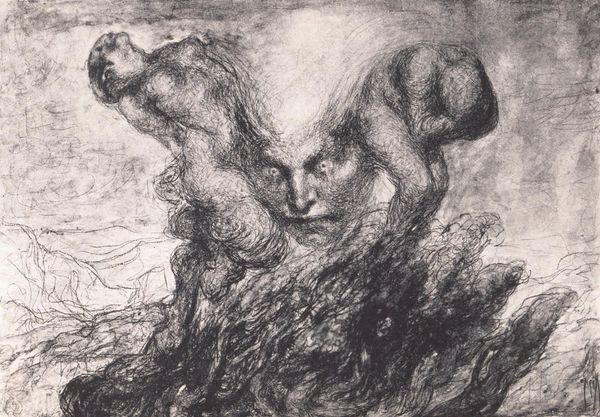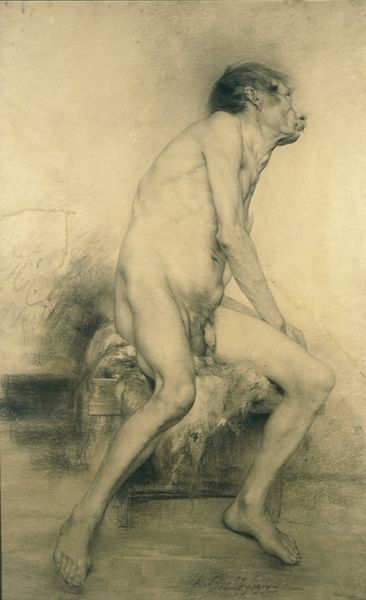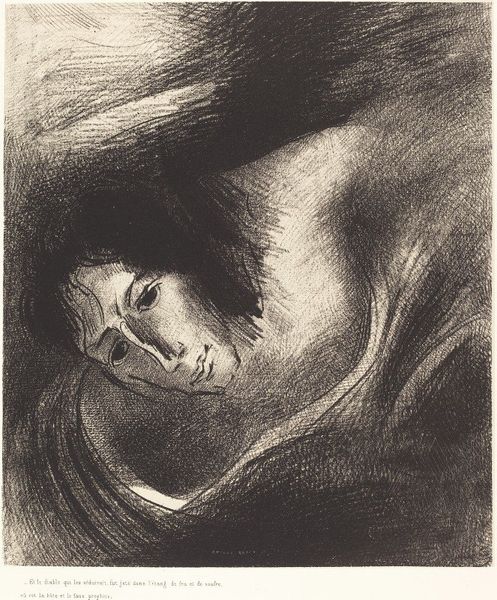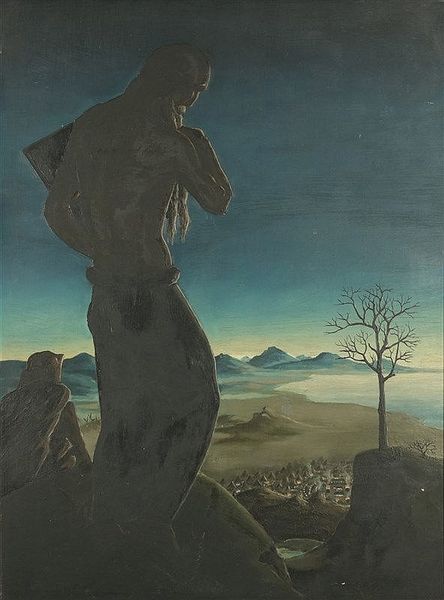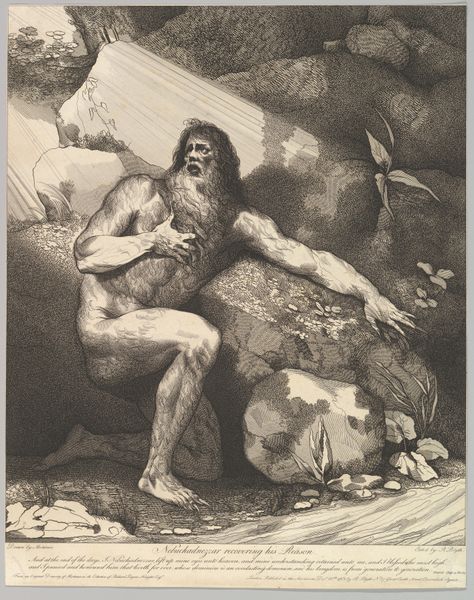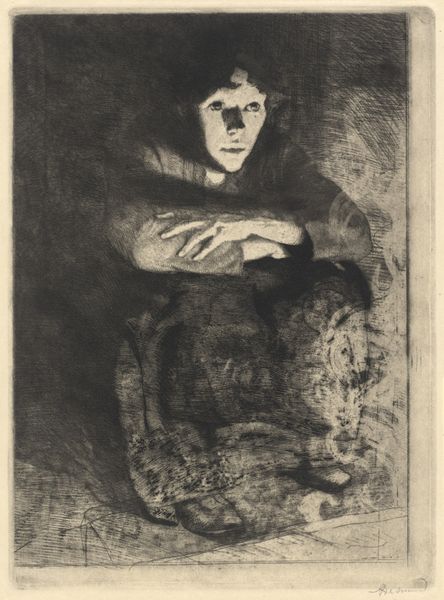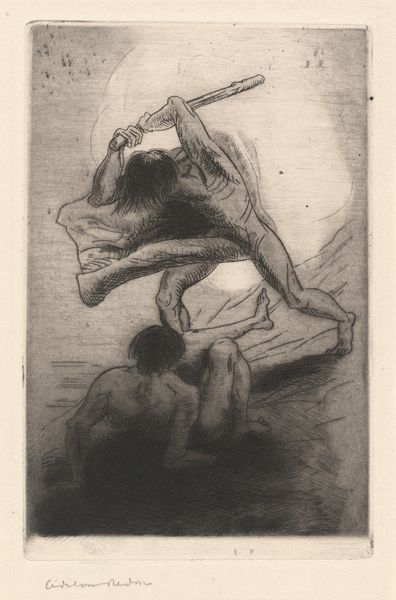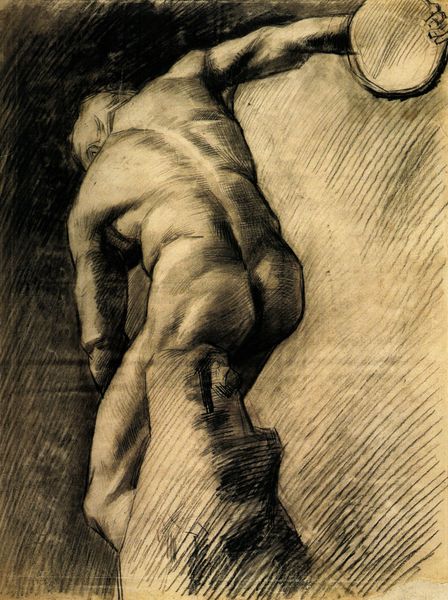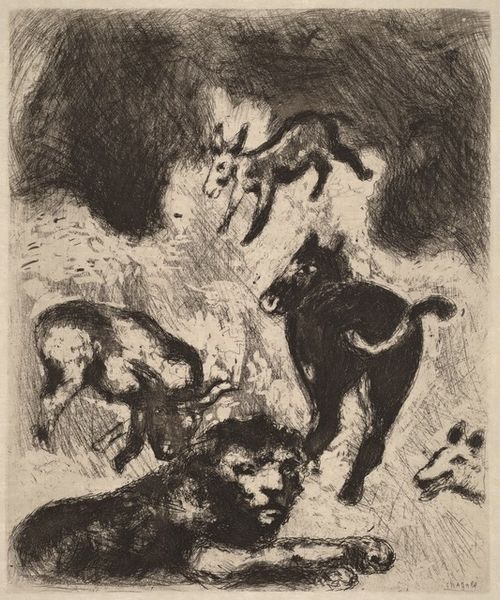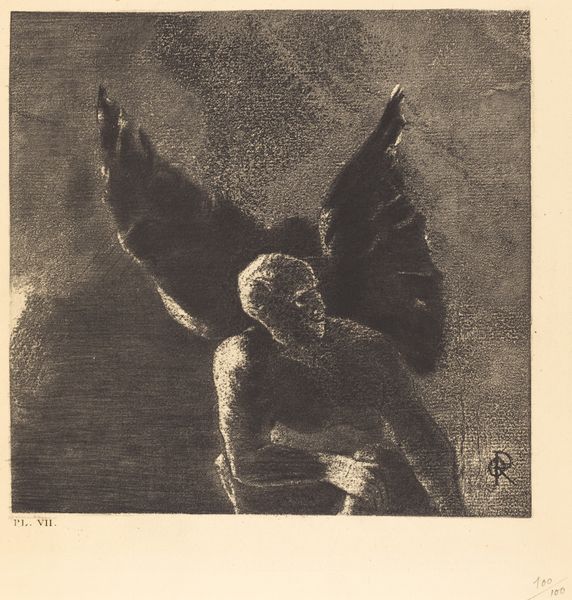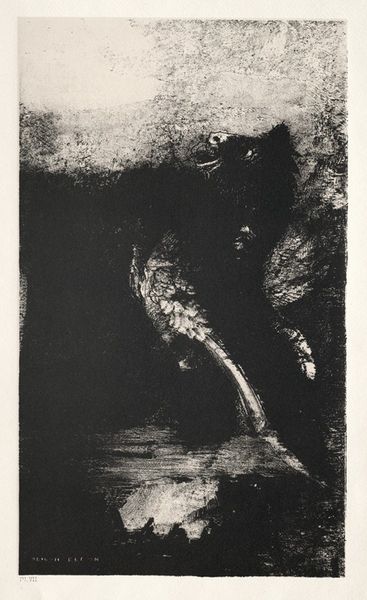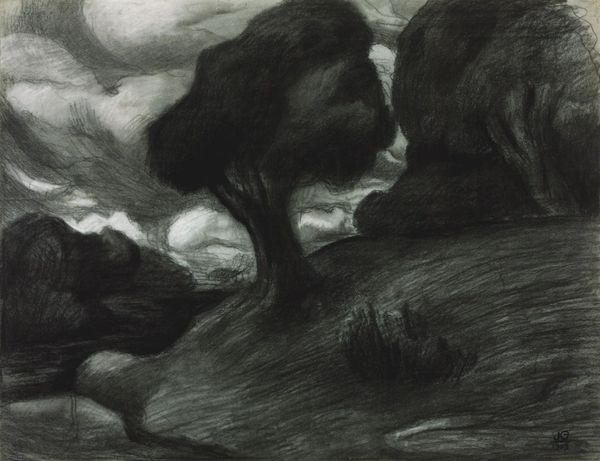
drawing, charcoal
#
drawing
#
landscape
#
charcoal drawing
#
figuration
#
charcoal
#
history-painting
Copyright: Public Domain: Artvee
Curator: Immediately, there’s a sense of brooding solitude. A huge figure looms in the foreground, dwarfing the landscape. There's almost a vulnerability to it. Editor: What you are sensing is likely informed by the turbulent period in which Francisco de Goya created "Seated Giant" in 1818. His later so-called Black Paintings and drawings were influenced by war and social upheavals in Spain, reflecting themes of isolation and alienation after the Spanish War of Independence and a period of illness. The artwork's date is pertinent to understanding the historical and personal context from which Goya worked. Curator: That context definitely adds another layer to the figure. Look at how he’s positioned – almost huddled, with that stark crescent moon hanging above him like a judgmental eye. This image almost recalls pre-Judeo Christian deities that were so intrinsic to understanding culture prior to mass adoption. The use of charcoal feels almost primal too, so basic yet so effectively evocative. Editor: Precisely. Goya masterfully used charcoal to convey both monumental scale and a palpable sense of fragility. Consider how giants are almost always portrayed; frequently they are an allusion to untamed power, they occupy a place of honor. However, this is a drawing; charcoal is, fundamentally, fragile; as such, this hints towards societal instability, vulnerability, and perhaps, Goya's commentary on how those with power can sometimes seem untouchable even when the opposite might be true. There is often symbolism related to the moon regarding insanity or uncertainty. The image might express an unstable period as seen from the eyes of those caught in the aftermath. Curator: I agree. It seems like the piece holds commentary on power, but also a stark observation about human nature—how quickly the mighty can fall or crumble under the weight of historical change. Editor: Or indeed how memory or the power we ascribe to historical figures, is similarly and equally subject to our perceptions of fragility or strength in light of cultural trends, new understanding of historical nuance, social dynamics, and intersectionality. In our attempt to explore those nuances more broadly, we come to learn more of those who stood witness to their own history. Curator: Ultimately, "Seated Giant" becomes a powerful reflection, both of the man himself, and a tumultuous period in the history he occupied. Editor: Yes, and it provides for all viewers, then, an interesting invitation to reflect critically on one's own relation to history and our ongoing cultural inheritance.
Comments
No comments
Be the first to comment and join the conversation on the ultimate creative platform.
